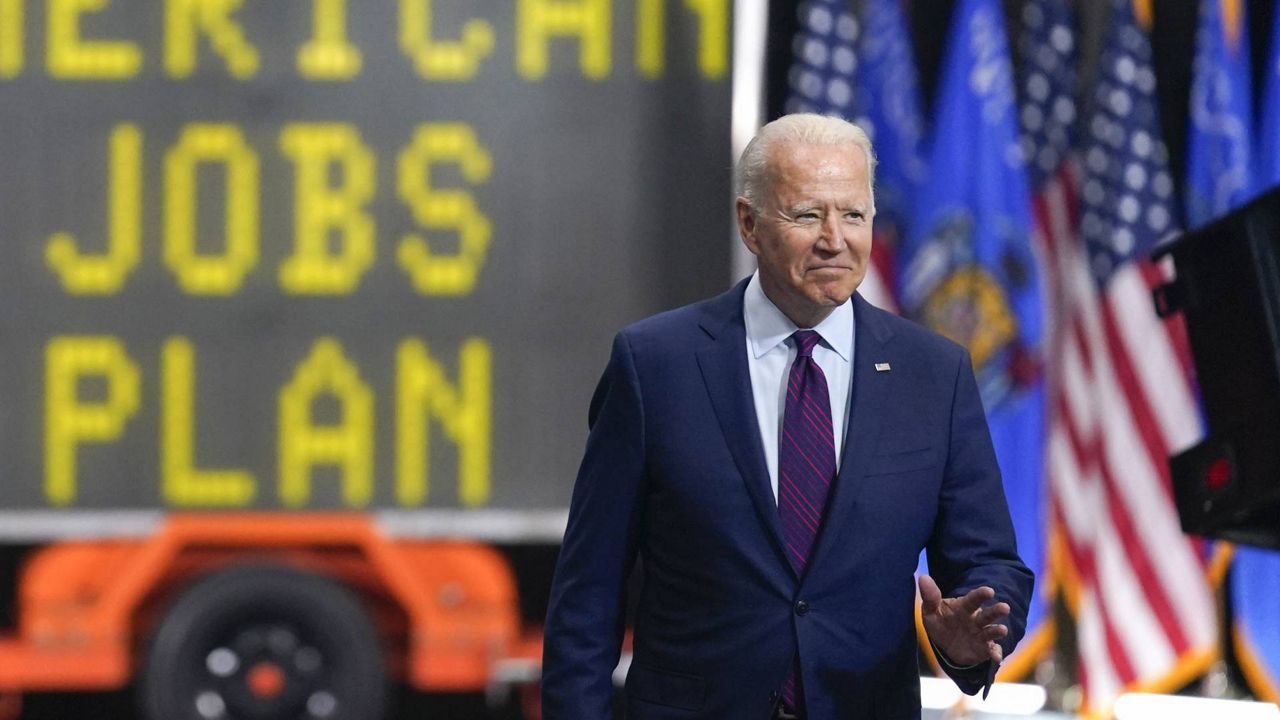President Joe Biden traveled to Wisconsin on Tuesday, visiting a local transit authority to tout aspects of the $973 billion infrastructure package that Biden says will create more jobs for the Badger State.
“I'm here to celebrate a step forward for our country,” Biden began Wednesday afternoon, adding: “This deal will put American workers to work in good paying jobs, not minimum-wage jobs, not $15 an hour jobs. Good paying jobs, repairing our bridges and roads.”
Biden stopped at the La Crosse Municipal Transit Utility, a small transportation agency with 10 bus routes and paratransit services for disabled individuals or other riders who are “unable to use traditional bus service,” per the White House.
In 2018, the agency was awarded $1.37 million in federal grant money to purchase two hybrid busses for its fleet. The president was shown the two new busses during his visit, and also met with local bus driver Laurie Nederloe, who said the EV fleet will soon rise to five.
“Back when I was in law school, I drove a school bus during the summer to pick up spending money,” Biden said after touring the facility. “And from one bus driver to another, Laurie, I want to say: Thank you for all you do to make this city run.”
The bipartisan infrastructure package allocates $312 billion to rebuilding the nation’s transportation systems, with a combined $15 billion of those funds specifically directed to electric vehicle infrastructure, electric buses and other electric transit.
Biden went on to highlight other projects, like road repair and broadband access expansion, that would receive additional funding from the infrastructure bill.
Some of those investments include:
$109 billion for roads, bridges and major projects
$49 billion for public transit and $66 billion for passenger and freight rail
$55 billion for water infrastructure
$65 billion for broadband infrastructure
$73 billion for power infrastructure, including grid authority
“America has always been propelled into the future by landmark national investments — investments that only the government has the capacity to make,” Biden said, noting June 29 marks the 50th anniversary of President Dwight Eisenhower signing the Federal-Aid Highway Act of 1956 to create the national interstate system.
Biden also said there is a critical need to improve crumbling infrastructure — from overwhelmed power grids to lead-filled water pipes to traffic-clogged roads — and stressed that a plan needs to be ambitious to not only improve Americans’ daily lives now but also to combat the growing challenges of climate change.
“This deal isn’t just the sum of its parts,” Biden went on to say. “It’s a signal to ourselves, and to the world, that American democracy can come through and deliver for all our people.”
As Biden trumpeted the deal in public, the White House also furiously worked behind the scenes to keep it on the tracks.
Senior West Wing aides have had calls this week with more than 60 Democratic and Republican members and chiefs of staff and other aides, White House Press Secretary Jen Psaki told reporters Tuesday aboard Air Force One en route to Wisconsin. And she said the White House was going along with the timeline outlined by Senate Majority Leader Chuck Schumer, who has said he wants to have both packages on the floor for debate next month.
“The president made clear that he is going to work his heart out, getting both bills across the finish line,” said Psaki.
The Associated Press contributed to this report.



